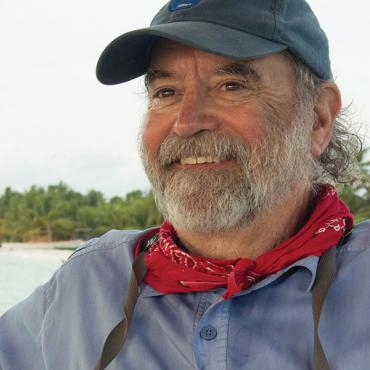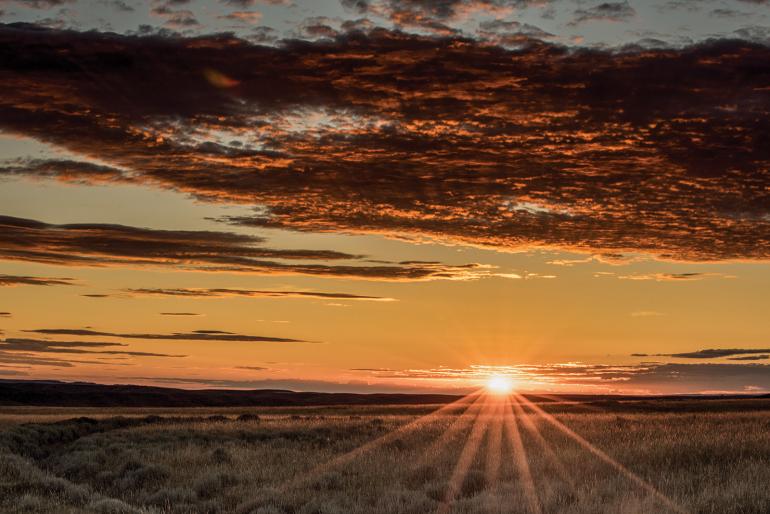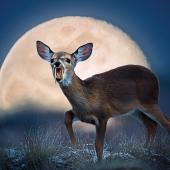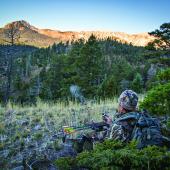The Low Road
Hunting Montana's prairies, plains & sage meadows.
I’d spent an hour sitting motionless in the sage while I observed the pronghorn herd. Running through September, Montana’s archery antelope season includes the heart of the annual rut, and the non-stop interaction among bucks and does provided a fascinating spectacle. As usual the terrain was open prairie, which made an undetected approach to longbow range a challenge.
Then one of the young bucks that had been expectantly circling the herd made his move and cut a doe out of the dominant buck’s harem. When the herd buck took off in furious pursuit, I enjoyed the spectacle of our continent’s fastest mammal chewing up miles of sagebrush at breakneck speed. Once the three of them disappeared over a distant rise, I calculated the herd buck’s most likely route of return to his does at the end of the chase and began to pick my way toward an ambush.
The mountainous parts of Montana attract the tourists, make the coffee-table books, and hold the state’s population centers. But all across the world, savannah habitat supports the richest wildlife habitat, greatest biodiversity, and highest carrying capacity. Our state offers ready access to the best of both worlds, and hunters should not ignore the breaks and prairies during the fall.
Pronghorn antelope are our iconic prairie big-game animal. Elk also occupy plenty of prairie and coulee country. All of Montana’s lowlands offer excellent deer hunting, with muleys widely distributed across open prairie and the foothills, and whitetails concentrated in river bottoms. The upland-bird hunting is the most productive in the state, offering abundant sharptails, Hungarian partridge, and pheasants.
Whatever the quarry, whatever your location across the state, hunting this terrain differs from mountain hunting in important ways. Here follows some advice for newcomers.
While a lot of this country appears flat at first glance, much of it is surprisingly rugged, especially in the breaks along the Missouri and Yellowstone rivers, and their tributaries. Physical conditioning can be just as important as it is in the mountains.
Potable water can be scarce, and hunters should be sure to carry adequate supplies both on their person and in their vehicle. When it does rain, visitors will face another problem when many back roads turn into impassable gumbo that neither chains nor 4-wheel drive can overcome. When rain threatens, head for pavement.
Because this is such open country, good optics are especially important for big-game hunters. It’s easier to find game with your eyes than with your legs, so don’t skimp on the quality of binoculars and spotting scopes.
Prior to snow and freezing weather, this is serious snake country. While the chance of a venomous bite is low, I always watch my step. If you are hunting with bird dogs, consider putting them through a snake-avoidance clinic, which I think is the best way to avoid losing a dog to snakebite.
Prairie terrain is subject to sudden, extreme weather fluctuations. I have hunted there in temperatures ranging from over 100 degrees to well below zero, and strong winds are always possible. After one frigid late-season goose hunt, I had to walk backward into the wind for a mile to the truck so my eyelids wouldn’t freeze shut. Dress in layers and pack clothing suitable for a variety of weather.
While much of this habitat lies in the public domain, a lot of it doesn’t. GPS technology and land—ownership apps can be invaluable aids to keeping you on the right side of the fence.
Thorns from cactus species close to the ground can be a problem. Knee and elbow pads are helpful on belly-crawling stalks, and footwear should have thick, tough soles to ward off spines.
At the beginning of my attempt upon that pronghorn buck, I estimated the odds against me as one in a million. But as Jim Carrey said in Dumb and Dumber, that meant I had a chance. In fact, the buck ambled back to his herd along the exact route I predicted, allowing me to send an arrow through his chest from 15 yards.
That was just one of countless challenges the prairie has offered me over the years. Sometimes, I can even rise to meet them.
E. Donnall Thomas Jr. has lived and hunted in Montana for over 40 years.












